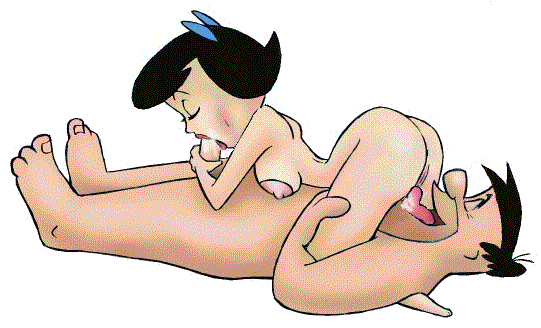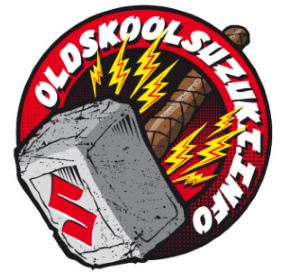-
Posts
5,755 -
Joined
-
Last visited
Content Type
Profiles
Forums
Events
Everything posted by Gixer1460
-
Well that's one thing off the list. If its all low end / idle range then its possible those circuits are dirty / blocked - carb strip time! What is the idle rpm set at? Does it idle ok?
-
Plenty of people use electric pumps but they can't be described as geared and huge so I naturally assumed it was a mechanical one! I believe the mechanical parts like in mine come from 50cc / monkey bike engine oil pumps just built into a nice housing.
-
Basic questions what are carbs from? 750 or Bindit? May be both 36mm but quite different jetting! The pipe and can will have an effect - initially i'd guess lean on decell / stopping - does it pop or bang? Does using the choke make it better or worse? Hopefully it'll have the bandit ignition and not the 750's!
-
Any mechanical pump can be driven from any rotating shaft - I used the end of the crank. Bigger isn't necessarily better - they deal with small amounts of oil efficiently so are running 'dry' most of the time - my pump gears are maybe 6-10mm wide and 25mm diameter, enough for me.
-
Ha Ha Ha - shows how long since i've used CV carbs LOL!
-
Doesn't only one of them have the vacuum take off for the fuel tap, hence 3 same + 1?
-
Victor Reinz have a very good reputation in gasket manufacture and supply lots of Auto OEM's so don't worry on that score.
-
Ain't called 'oil cooled' fer nothing!
-
The tighter you can get the squish the better it improves the burn but the tighter it gets the greater the risk of excess revs destroying the big ends from touching. Multiple base gaskets are ok copper, steel or paper options all good although paper can deform into the transfer galleries blocking up to 25% of their area. Personally I preferred to take the oil out of the block entirely and run external lines - no leaks and cooler oil IMO.
- 18 replies
-
- 1
-

-
- 36 flatslides
- 1168
-
(and 1 more)
Tagged with:
-
Very impressive and innovative! Can't say i've ever seen anyone use a bevel driven oil pump but if it works then why not!
-

Billet Big Block for GSXR 1100W
Gixer1460 replied to Pasis's topic in Water Cooled, V-Twins, Singles and 2-strokes
Wow - not surprised you has HG issues - 81mm o/all liners - 79.5mm bore = 0.75mm liner thickness! New block looks mint - how are the water channels connected to allow flow once the liners are installed? Should enjoy turbo boost with this one. -
The new ones compared to your old ones will seem soft as the old ones have had 20-30 years to harden / stiffen up. Personally i'd say the jubbly clips aren't helping - the edges are sharp not dressed or rounded like most OEM clips so can cut the more flexible rubber which will 'balloon' more with intake pulsing but 6 months is pretty poor whatever the cause!
-
Not such a bad idea and also if you do throw it down the road will stop the pump pissing fuel over a hot engine! Just don't run out of fuel as cranking an engine to build oil pressure to activate the pump to re-fill the bowls can kill an average condition battery!
-
Usual symptom of an intake air leak and / or a slightly frayed cable inner - either way, excess air!
-
Yeah - Phone Stuart at Warpspeed Racing - UK made and works well!
-
Maybe ok as a supplementary cooler for a car but I consider dash 8 hose undersized for main cooling pipe on an oil cooled engine, dash 10 minimum IMO!
-
Personally I wouldn't go smaller than a 19 row regular width, wide type if you prefer slightly better cooling if any performance mods in future are planned. 19 row regular worked for me on a streetbike with turbo fitted - but it did get BLOODY HOT! at lower speeds LOL!
-
1/8" NPT would be about right.
-
Anywhere between high 13's and 14.5v depending on rpm's
-
Loads!......... Try this one - https://www.oldbritts.com/brake_line.html They have a nice alloy hose clamp, i've managed using the vee in a workmate for years, or without using a Dremel. The one thing that MUST BE DONE is ensure the olive is seated right down on to the inner pipe. I usually tap it on with small hammer then holding the hose, olive end down, smack the olive face against the bench to drive it on - you'll see the inner clearly when its fully home. And that's it! PS - don't forget to put the 'nut' on the pipe, over the masking wrap, before cutting / flaring - you won't do it after - Trust me!
-
Respectable and the right noise!
-
Brakehoses don't need to be swaged! DIY build will need a sharp fine bladed hacksaw or Dremel cut off wheel, a sharp knife to de-bur the teflon inner hose, some masking tape, a 7/16 or 1/2" spanner and a metal vise - thats it!
-
I can't speculate but any wideband controller i've seen are either in a box about the size of a packet of fags, one's like the Innovate one above or built into a read-out gauge. They are fairly complicated electronics to heat and keep the sensor at a constant temperature, do the comparison between gas sampled and its baseline, and then change a millivolt output and scale it up to something between 0 and 5v!. The company response would worry me unfortunately as they can't be sure?
-
Did some digging and downloaded / installed the SX Tuner software that had a manual attached and found this..... " Closed loop fuelling control is provided by using either a narrowband lambda sensor connected directly to the ECU lambda input or by using a wideband sensor connected via an external wideband sensor controller with a 0-5V analogue output. Narrowband sensor control can only be used to target exhaust lambda of 1.00 (AFR 14:7 with petrol/gasoline), normally for exhaust emissions reduction using a three-way catalytic converter. Wideband sensor control can be used to target any air-fuel ratio and also for tuning. SC recommends that wideband control is not left turned on permanently, but only used as a tuning tool. Wideband sensors and controllers are not generally reliable enough to use for long periods of time and a faulty sensor could give incorrect feedback into the ECU and cause the engine to run dangerously lean, resulting in engine failure. Once the engine has been correctly calibrated there is no need to continue using wideband lambda sensor control." So without seeing the actual install I can't see if a controller has been installed but it should be fairly obvious ...... see this.... Hope this helps not hinders?
-
Not seeing that in their blurb! It says narrow or wideband CONTROL ie. of fueling, not how the sensor works. You must have a wiring diagram for fitting it - even if you didn't fit it? A copy / look at that would confirm?

